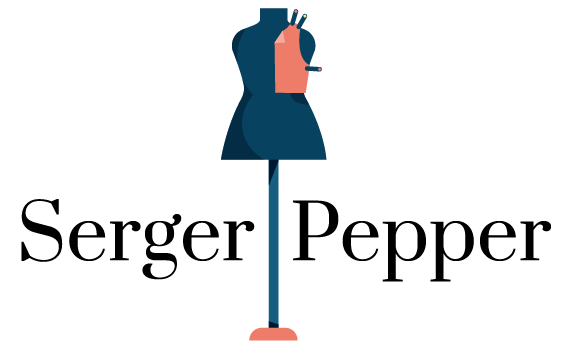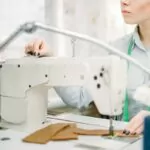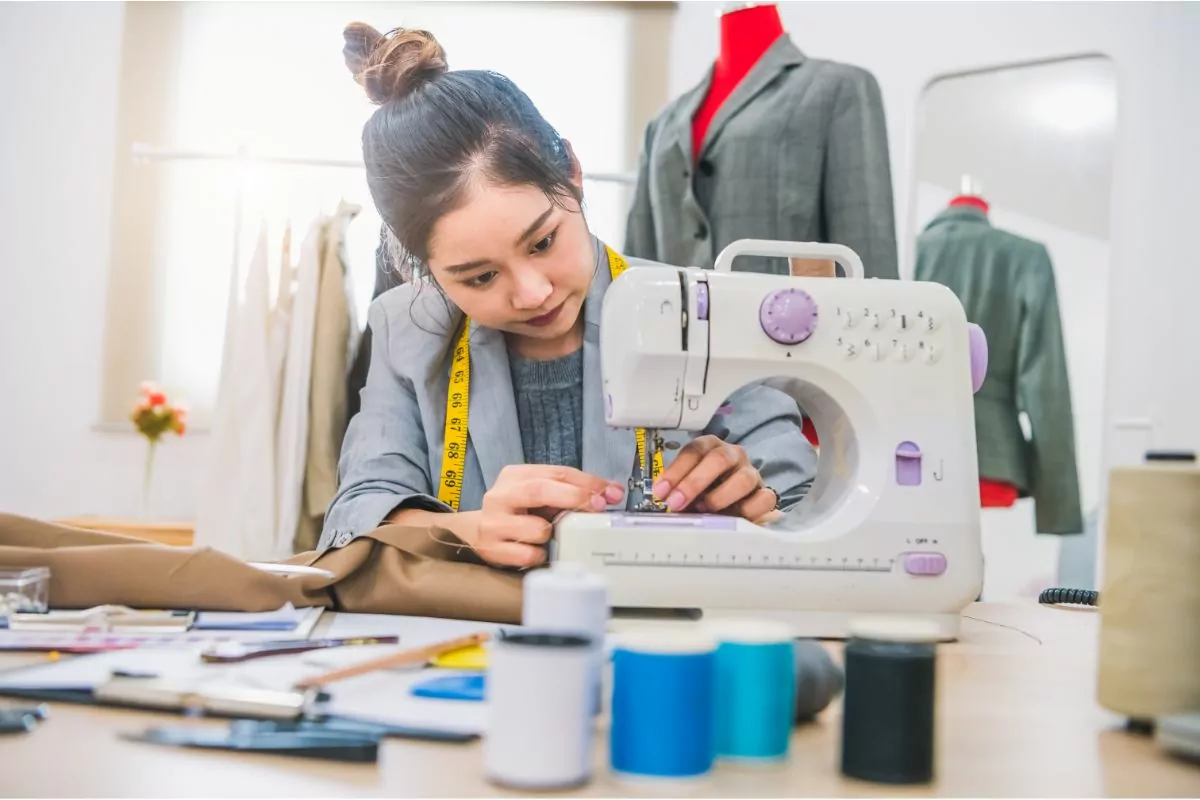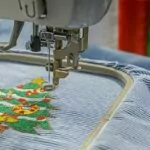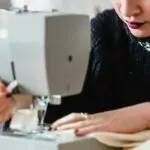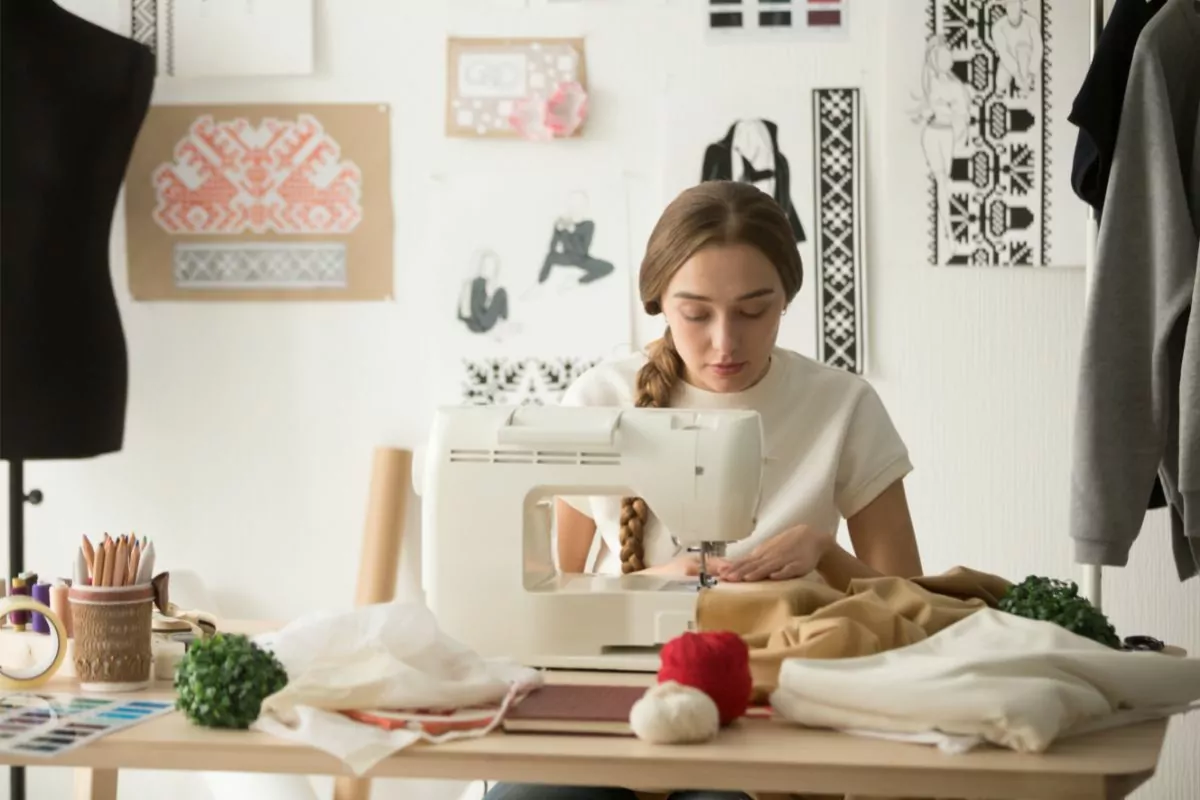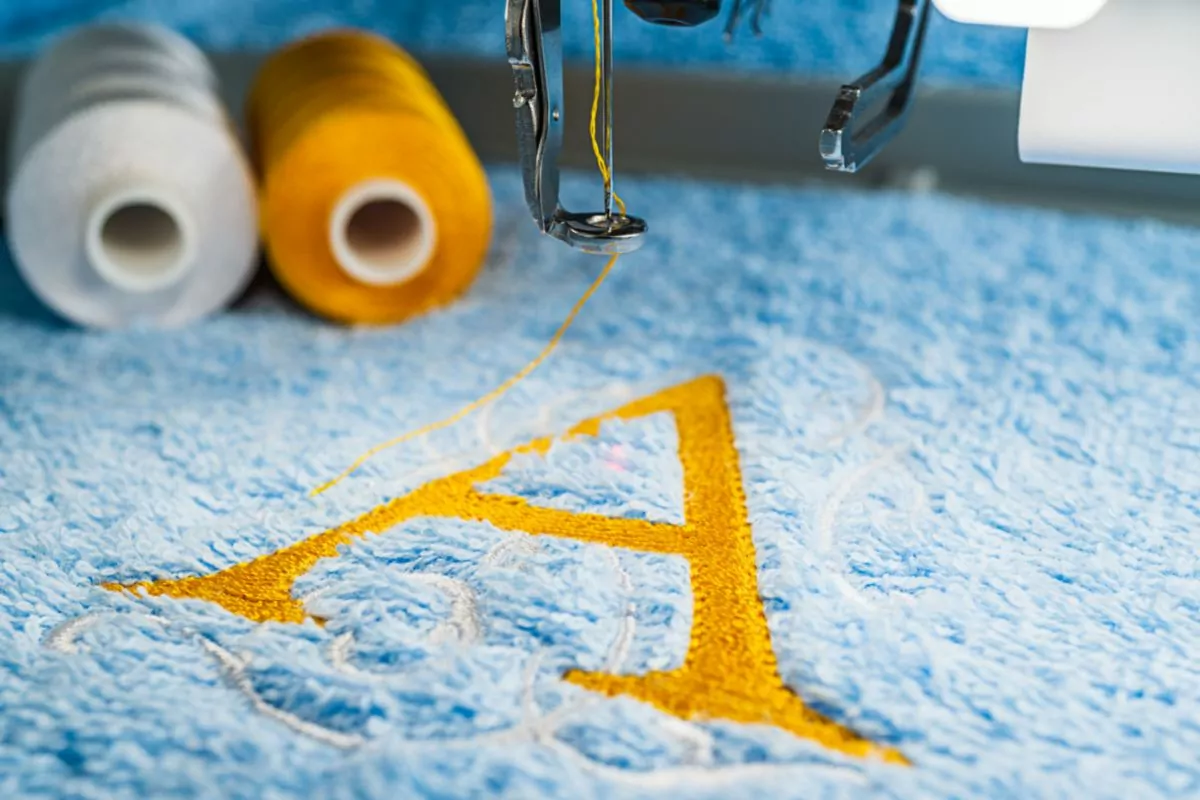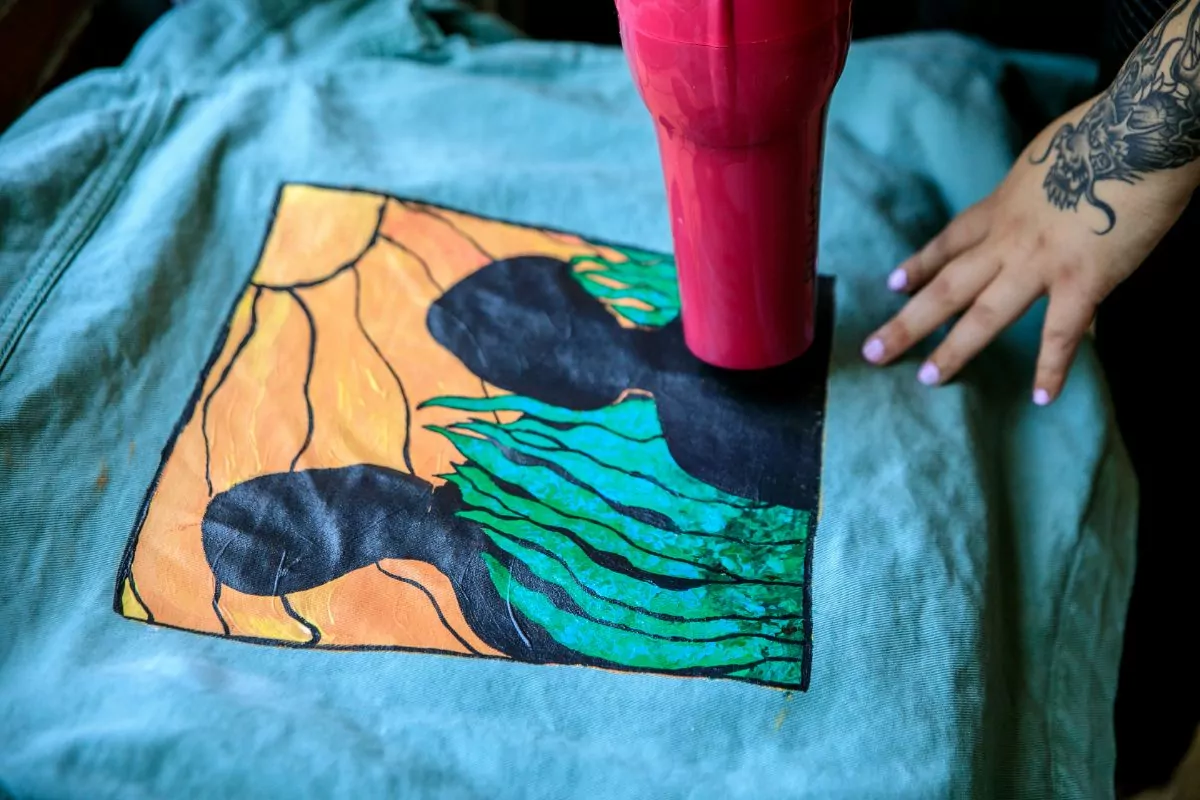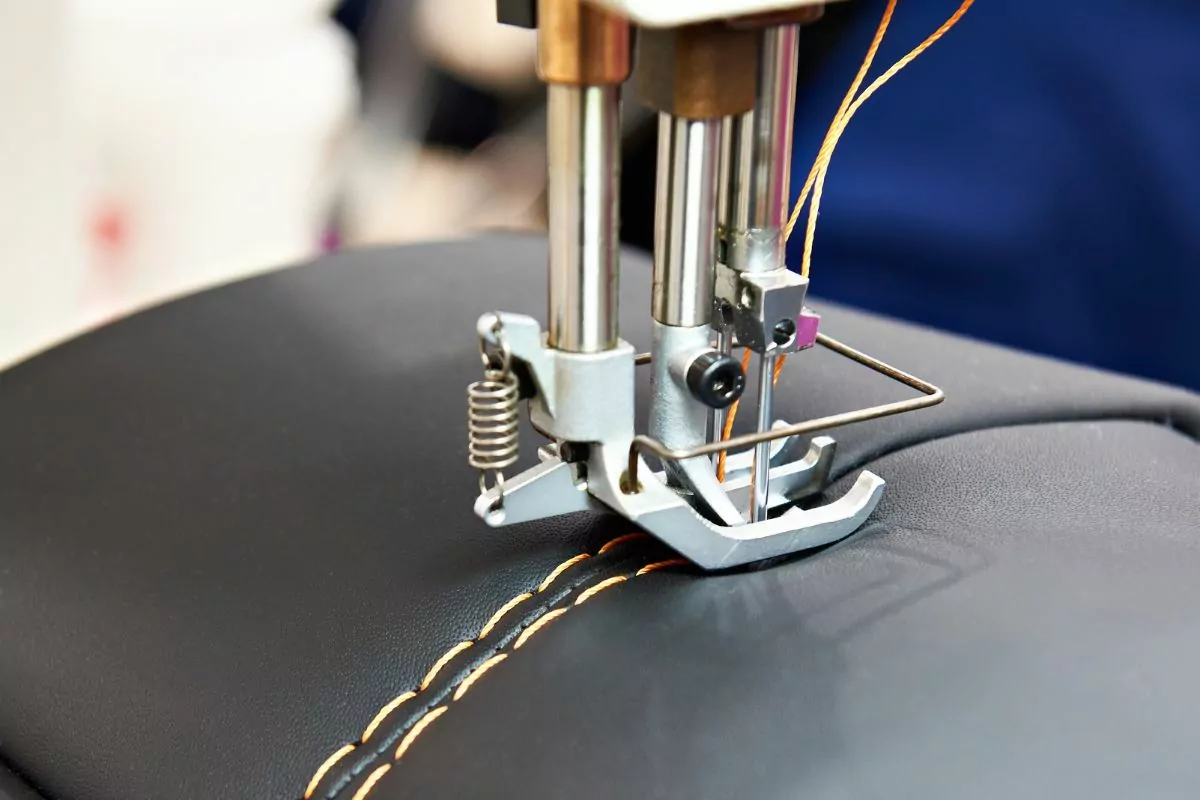If you’re new to the world of sewing, there are likely to be many new terms that you might not understand.
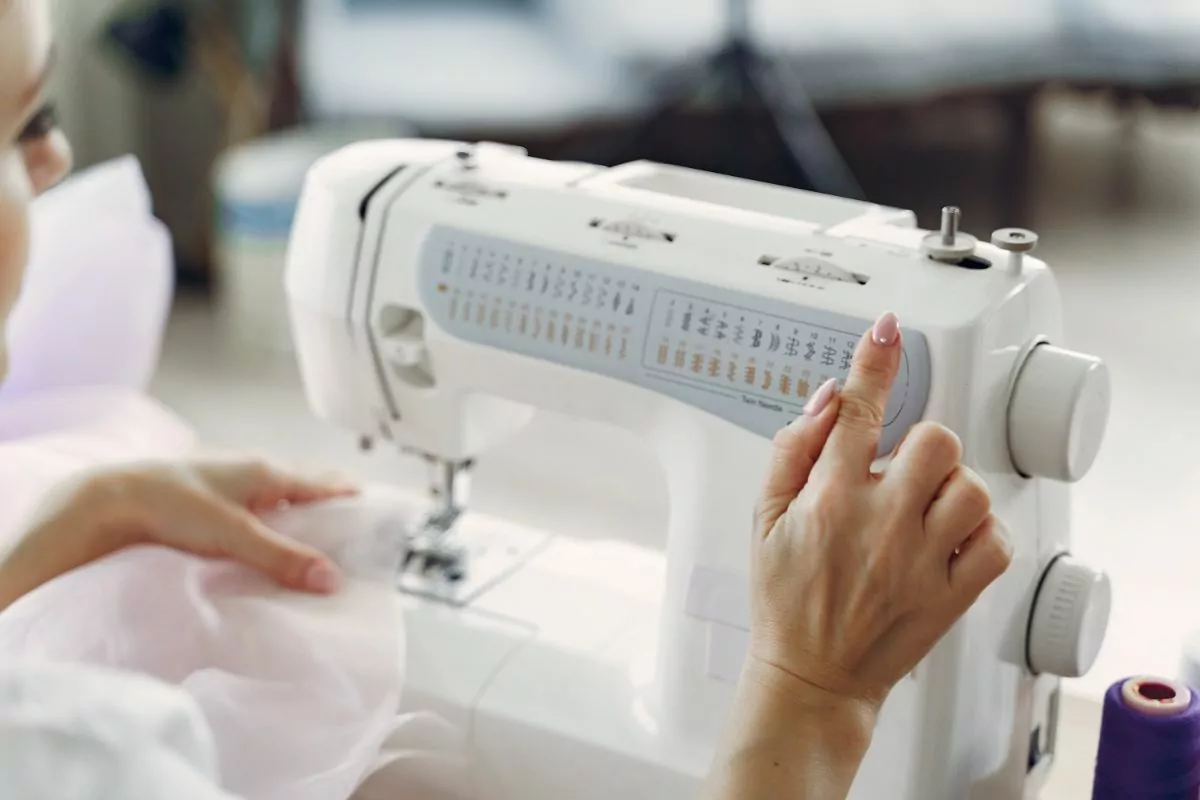
This is perfectly natural and something that all beginners face. One of the most commonly questioned terms is “serger stitch.” So what exactly is a serger stitch, and how is it used in sewing?
In this article, we’re going to take a closer look at what a serger stitch is, how they’re used, and it can be a useful tool for sewers and tailors.
Whether you’re an experienced tailor, or just starting out, we’re going to explain in detail why the serger stitch is an important technique to have in your sewing arsenal.
We’ve also made sure to include a short FAQ section that will help explain anything else you might be wondering about.
What Is A Serger Stitch?
A serger stitch is a type of seam-finishing method used in sewing and tailoring.
A serger, also known as an overlock stitch, is a specialized method of sewing that creates a secure and professional-looking stitch by simultaneously trimming away excess fabric and enclosing the raw edge of the fabric.
This results in a neat, clean, and strong seam that is less likely to fray or unravel over time.
A serger stitch consists of two to five threads that are interlocked in a looping fashion.
These threads create a stretchy, flexible, and durable seam that is ideal for sewing knit or stretchy fabrics.
The serger stitch can be used on the edge of a garment, or to join two pieces of fabric together.
You can learn to overlock stitch by hand, but this is a lengthy process that might take some time. Because of this, some people choose to purchase a serger or overlock machine.
We’ll go into more detail about overlock machines in a later section of this article.
What Are The Main Benefits Of Using Overlock Stitches?
One of the main benefits of using a serger stitch is the ability to produce a professional-looking finish that will show a level of skill to anyone experienced in sewing (see also “Easy Sheer Plaid Top Sewing Guide“).
Serger stitches are strong and durable, and they do not unravel or fray like traditional sewing seams.
This makes serger stitches ideal for use in high-stress areas of a garment, such as a waistband, neckline, and armholes.
In addition to its strength and durability, the serger stitch also has aesthetic benefits. The looping thread creates a textured look that can add interest and detail to a garment.
More than this, the serger stitch can be used to create decorative effects, such as ruffles, gathers, and rolled hems.
Should I Get A Serger (Overlock Machine?)
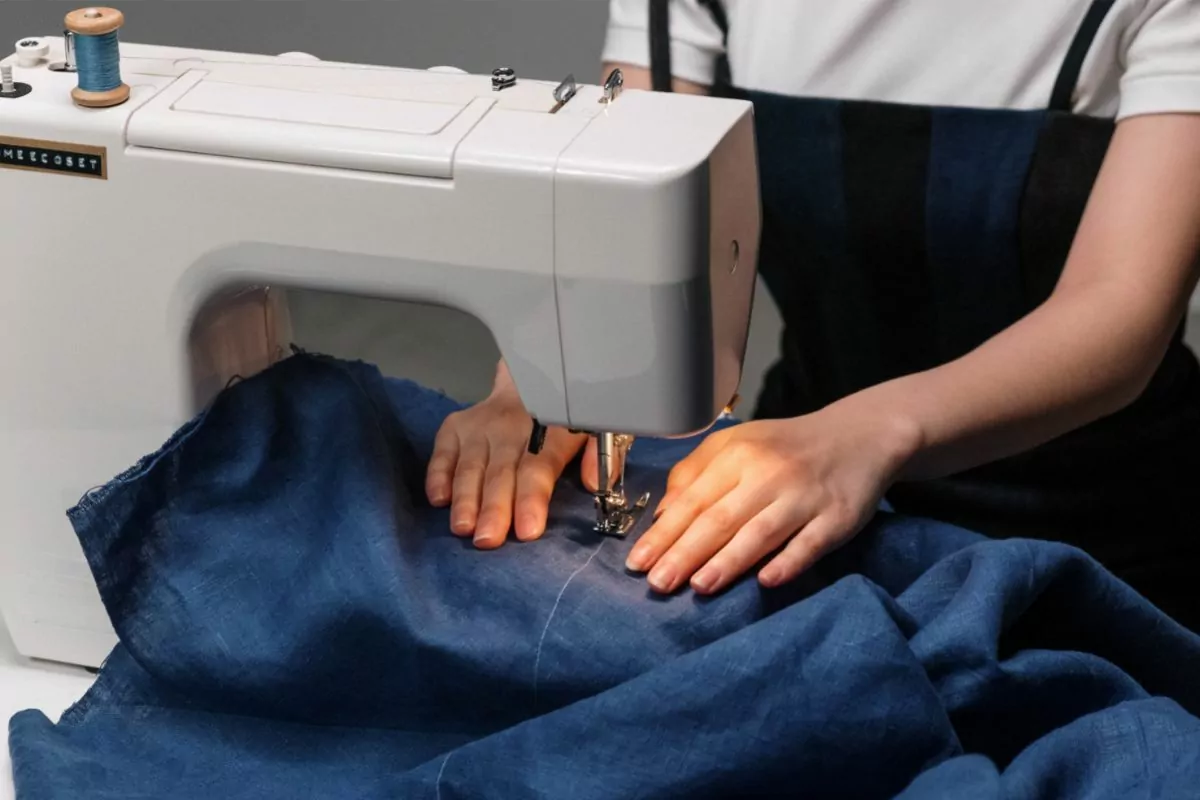
One of the problems with learning to create overlock stitches by hand is that it can take some time and effort.
If you find yourself needing to create overlock stitches often, then an overlock machine can be a great way to speed up the process.
An overlock machine differs from a traditional sewing machine by doing two things at once: trimming away any excess fabric, and enclosing the raw edge of the fabric to create a more professional finish.
By contrast, a traditional sewing machine will only sew two pieces of fabric together.
So, should you invest in a serger for your next sewing project? This depends on a few distinct factors, including how experienced you are, the type of projects you’re looking to work on, and how much time you have available.
Main Advantages
- Speed: Overlock machines can sew much faster than basic sewing machines, which allow you to finish large-scale projects faster.
- Professional Finish Without Experience: If you struggle to overlock stitch by hand, then this is a great choice to level the playing field. Overlock machines allow you to quickly finish pieces with an impressive level of quality. It can be a perfect way to strengthen high-stress areas of the project you’re working on.
- Versatility: Overlock machines can be used to finish the edges of a garment, or to join two pieces of fabric together. It’s also a fast way to easily create aesthetically pleasing effects like gathers, rolled hems, or ruffles—all of which take some time to learn to do by hand.
Main Disadvantages
- Cost: Overlock machines are considerably more expensive than basic sewing machines, which could put you off if you don’t have a huge budget.
- Material Types: Overlock machines don’t work so well for thicker, heavy-duty materials like leather, denim, canvas, suede, flannel, or tweed.
Final Thoughts
To conclude, a serger stitch is a method of stitching that allows you to quickly finish seams when working on various tailoring projects.
We’d generally suggest learning how to overlock stitch by hand, then investing in an overlock machine if you find yourself in need of more volume.
We hope that this article has helped you to understand what a serger stitch is, and that you’re now a lot more confident about how to learn to do this, and why you might want to.
If you still have some questions about the finer details, check out our short Frequently Asked Questions section below.
Frequently Asked Questions
Can I Use A Serger Stitch Machine For All Kinds of Fabrics?
Serger stitch machines work best when used on knit or fabrics that are stretchy. They are much less effective for any heavy-duty type of material like canvas or leather.
More than this, heavy-duty fabrics can cause your machine to become jammed or damaged.
How Difficult Are Serger Stitch Machines To Use?
Serger stitch machines are designed to be simple to use and often come with intuitive controls and a minimal setup process.
They make it easy for sewers of different levels to conquer overlock stitching in a matter of minutes.
How Much Does A Serger Stitch Machine Cost?
The average cost of a serger stitch machine can vary widely depending on the brand you choose, the specific model, and any additional features you might be interested in.
Expect to pay upwards of $500 for a high-end model, with basic models costing around $100.
- How To Sew Fabrics Together - June 5, 2023
- How Many Stitches Per Inch? - June 5, 2023
- How Long Does It Take To Sew A Dress? - June 5, 2023
